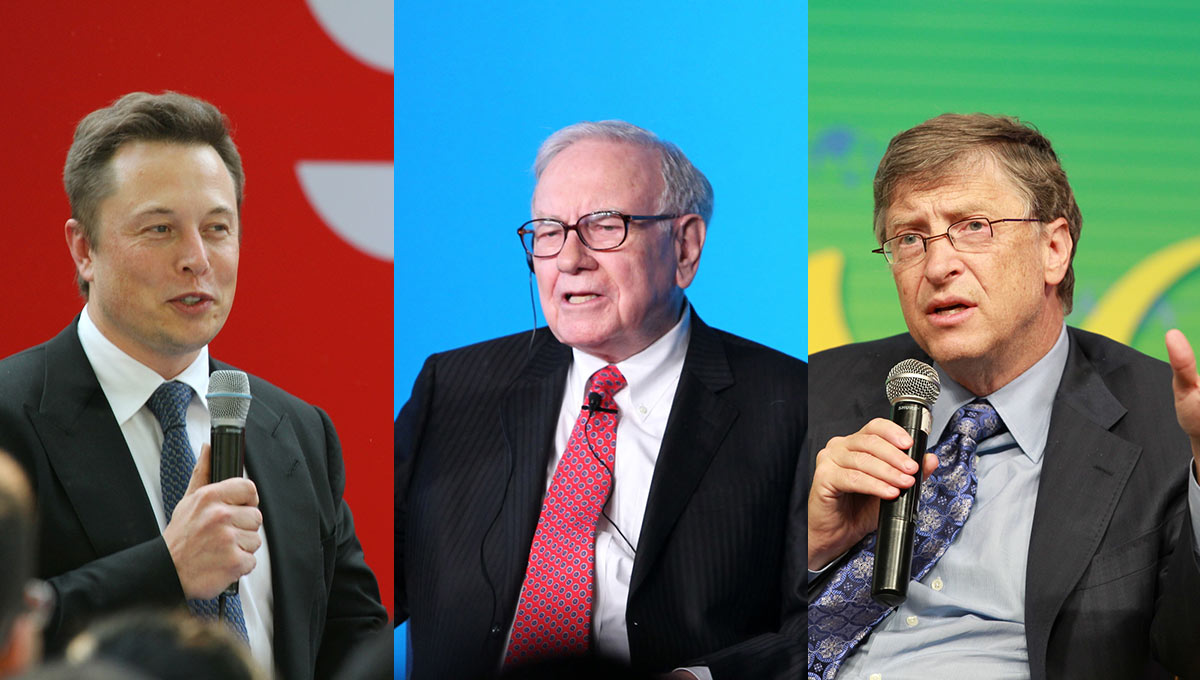
The global imperative to transition toward sustainable energy has spurred some of the world’s wealthiest and most influential figures to claim leadership roles in the climate battle. Among these, Elon Musk, Bill Gates, and Warren Buffett stand as titans whose combined investments exceed $100 billion.
Yet, despite a shared commitment to decarbonizing the planet, their approaches diverge sharply, highlighting competing philosophies about how best to solve the climate crisis. This green war—waged through consumer products, cutting-edge technologies, and massive infrastructure investments—not only shapes the future of energy but exposes tensions at the heart of the environmental movement.
Elon Musk has made consumer adoption of clean technology his frontline strategy. Through Tesla, he revolutionized electric vehicles (EVs), pushing the automotive industry into an era of zero-emission transportation.
Tesla’s sleek EVs, combined with aggressive scaling of battery production, have created tangible alternatives to fossil-fueled cars and spurred global demand. Musk’s acquisition of SolarCity and subsequent integration of solar roofs and energy storage systems such as Powerwall have expanded the clean energy ecosystem to homes and businesses.

This consumer-centric approach leverages cutting-edge technology and brand appeal to accelerate the shift toward sustainability. For Musk, empowering individuals to generate and store their own renewable energy is a powerful weapon against climate change.
Meanwhile, Bill Gates’s approach is rooted in technological innovation and long-term climate solutions. Through Breakthrough Energy Ventures, Gates directs billions toward funding startups and research in emerging clean technologies like nuclear fusion, advanced batteries, carbon capture, and next-generation biofuels.
His strategy acknowledges that while consumer adoption is crucial, solving climate change ultimately requires breakthroughs that fundamentally alter energy production and consumption. Gates emphasizes supporting technologies that are not yet commercially viable but hold transformative potential over the next decades.
This venture capital-driven model exemplifies a patient, science-led approach that often requires massive upfront investments and faces significant technical risks.
Warren Buffett’s role in the green transition comes through his vast investments in infrastructure via Berkshire Hathaway Energy. Buffett focuses on utility-scale solar farms, wind turbines, and transmission systems, reflecting an infrastructure-first philosophy.

His billions invested ensure that renewable energy capacity expands at scale and integrates into existing power grids. Unlike Musk’s consumer products or Gates’s high-risk tech ventures, Buffett’s method prioritizes reliability, steady returns, and gradual but persistent decarbonization of energy generation.
His influence in the utility sector allows him to shape the pace and nature of the transition, balancing environmental goals with financial prudence. These three billionaires collectively reflect the broad spectrum of strategies required to address climate change.
Musk’s model ignites consumer demand and disrupts markets with innovative products. Gates’s approach fosters scientific advancement and systemic change through bold technology bets.
Buffett’s investments stabilize the energy transition by scaling infrastructure and managing risk. While they share the ultimate goal of decarbonization, their differing philosophies sometimes place them at odds, underscoring the complexity of orchestrating a global shift in energy systems.

Critics of Musk point to the environmental and ethical challenges embedded in EV production, such as mineral extraction impacts and labor concerns. Gates faces skepticism over whether the technologies he funds will ever reach commercial scale or remain economically viable.
Buffett’s conservative investments have drawn accusations of slowing the green transition by supporting legacy utilities reluctant to fully embrace renewables. These critiques highlight that each approach carries trade-offs and risks that must be managed carefully.
Financially, their investments total well over $100 billion, signaling the scale of resources required to confront climate change effectively. This massive capital deployment has galvanized the private sector, governments, and consumers to accelerate sustainability initiatives.
Yet, it also concentrates enormous influence within a small group of ultra-wealthy individuals, raising questions about accountability, equity, and democratic governance in the climate movement.
The divergent strategies also reflect differing views on the pace of change. Musk’s consumer-driven model seeks rapid disruption to accelerate adoption, aiming to shift market dynamics quickly. Gates’s science-focused approach recognizes that foundational breakthroughs may take years or decades.
Buffett’s infrastructure investments reflect a more incremental transition, emphasizing grid stability and reliability as renewables expand. Balancing these timelines and priorities remains one of the central challenges in global climate policy.
Despite their differences, Musk, Gates, and Buffett have catalyzed unprecedented attention and funding toward sustainability. Their efforts have influenced public perceptions, shaped government policies, and inspired new ventures worldwide.
The green transition they lead is multi-faceted and requires coordination across technology, finance, regulation, and social engagement. How these billionaires navigate their roles in this transition will profoundly impact the planet’s future.
:max_bytes(150000):strip_icc():focal(999x0:1001x2)/Bill-Gates-Elon-Musk-71f6dcc17d124342b36a0b67dda97fa4.jpg)
Looking forward, the success of the global green transition depends not only on technological innovation and capital investment but also on inclusive policies that address social equity, energy access, and workforce transformation. As Musk, Gates, and Buffett continue to invest and advocate, broader stakeholder engagement will be essential to ensure that the benefits of decarbonization reach all communities.
In conclusion, Elon Musk, Bill Gates, and Warren Buffett represent distinct yet complementary fronts in the $100 billion battle against climate change. Their competing philosophies illuminate the challenges and opportunities of orchestrating a global energy transition.
The stakes are enormous, and the path ahead is fraught with technical, financial, and social complexities. Understanding and reconciling these diverse approaches will be critical to achieving a sustainable future for the planet and its inhabitants.



-1747626902-q80.webp)
-1747371872-q80.webp)